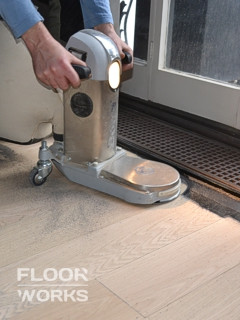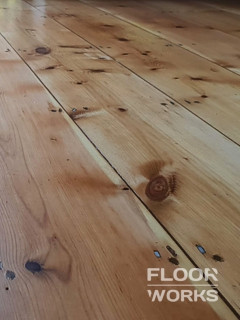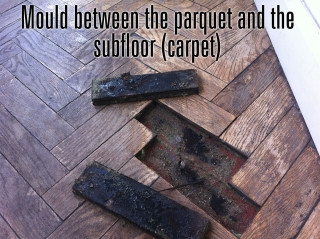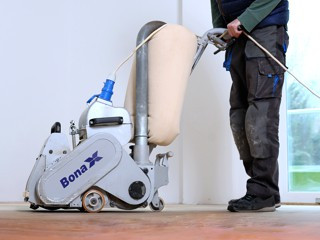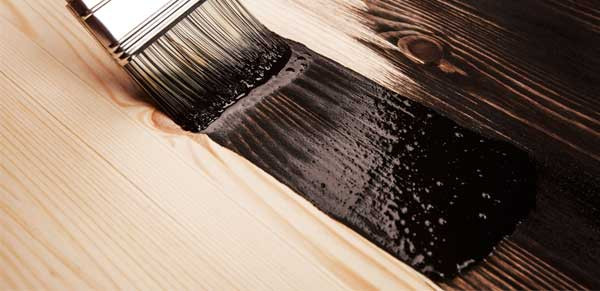Sanding wood floors in the different seasons
Floor Sanding In The Different Seasons

Are your wood floor sanding plans affected by the season? In general, you need to be aware of the fact that sanding process is different in the different seasons and today we are about to find out why and what are the main differences that might affect your service plans and management. The various seasons in the UK come with quite different climate changes and conditions and sometimes directly, sometimes indirectly have their impact on the general condition of your wooden floor as well as on the sanding service itself. Although we often associate UK’s weather with a lot of rains and humidity, various seasons still bring various climate and weather conditions you need to be aware of the way these might affect flooring.
So, what is the best time of the year to undertake a wood floor restoration service?
Before discussing this topic more in depth, let’s clear out what's actually included in the sanding method, considering the fact that many people still do not have any or not a lot of experience with the service. Generally, the process of sanding consists of removing a fraction of the wood floor’s top layer consisting of the floor’s finish and, if needed, a bit of the bare wood underneath itself. Why is this required? Due to a number of reasons we will discuss shortly below, wood flooring experiences wear and tear as well as other issues and problems. All this results in a number of imperfections that might affect the condition and appearance of the floor. The most common reasons for these changes include everyday use in an extensive period of time, heavy footfall and high traffic, indoor humidity, moisture problems, regular temperature changes and high amplitudes, etc. In a result, the floor might start getting less sturdy, to dry out and start to get squeaky and noisy, the boards might get loose or even broken, start to bend or cup due to moisture problems, the natural wood’s colour might fade or get dull and more. However, no matter the source of issues and the result expected, the most common imperfection that your wooden floor will start experiencing and struggling with soon or later is related to its finish.

The sealing products are a necessity of every wooden floor, considering the fact that the timber, although a naturally hard and resistant material, still requires some additional protection and preservation of its natural colour, texture and grain. Due to this the finish needs to be re-applied every now and then, because everyday use and high traffic lead to the finish weakening its protective power. When the strength of the finish is weak and poor, or when the protective layer is completely gone, this means that all sources of problems and issues are starting to affect the care wood directly and this usually leads to more complicated, time- and money-consuming repair and refurbishment processes. Let’s go back to sanding and mention once again that the process is performed in order to the old and worn finish to be removed as well as some of the smaller imperfections on top of bare wood such as fine scratches and dents, stains, dull or faded patches and what not.
Finally, sanding is also important for preparing the floor for an application of fresh new layers of protective sealant. Even when it's cut into boards, wood is still a natural material and it has its porous structure. The sanding process benefits for the opening of wood’s pores, so the finishing and sealing products can be more effectively absorb into the wood and provide the floor with better and long-lasting protection.
As you may guess, both the real wood material and the floor sanding process can be affected by the seasons and the specific weather conditions of every season to be exact. What exactly does this mean and what sort of seasonal impact we can expect, we are about to discuss below!
Wood floor sanding in spring: After April showers come to the May flowers they say and as you may guess it already, we associate springtime with a lot of rain. With the rainy season ahead, we recommend you to delay your renovation plans for a bit, although you might be tempted to start new and exciting home improvement projects. We understand the urge to change and renewal that always comes with spring when nature itself is rejuvenating and waking up from the long winter dream, however, rainy seasons is definitely not the best time to undertake a sanding project, here is why. As we have already mentioned, wood is a natural product with its natural reactions and respond to the environment. With that being said, wood flooring is sensitive to higher moisture and humidity levels and its respond consists of expansion. When the porous structure of wood starts to expand dramatically, this can lead to a number of major issues like loose or even broken boards, cupping and ballooning, etc. In this thread of thoughts, a restoration and repairs for hardwood floors are not your priority now and they would be highly required only in case you initiate a refurbishment project and after repairs, definitely not before them, otherwise there is no point to invest your money, time and energy in an improvement that won’t last for a long time.
During the Summer: When the first sunrays start hitting the town, you can start planning your wood floor sanding project. Why is summertime the best time to plan such a project? First of all, weather conditions are pretty mild and appropriate for wood flooring project now. With less moisture expected, less humidity and pretty regular and average temperature outside the house, the indoor environment gets more appropriate for sanding too. In the summertime, there is no much to affect and impact on wood, so wood is not responding to any dramatic changes and reactions. Furthermore, summertime is time for holidays and longer journeys, which means less time you spend at home and less time to be bothered by a wood floor sanding project. We recommend you to plan things this way so you will be enjoying your holiday while sanding professionals are working on your improvement project. This way you will not simply be affected by the disruption caused by sanding service, but also you can allow the project to run smoother when there is no one around the house to slow down the service provided by the professionals. When you are not around the house, you can also allow more time for the wood floor finish to dry completely and be ready for use. Finally, when you are back home after your holiday, you won’t be required to deal with any mess, hassle and strong odours that can be expected along with the sanding process.
Sanding in autumn: Let’s say that you do not feel comfortable with undertaking a wood floor restoration and improvement project in the summertime. Perhaps you do not feel ok with leaving the sanding team while you are away and cannot supervise them, or you do not have any plans to go on a holiday and you prefer to stay at home and rest for a while. Do not worry, because autumn seasons is still a good time to make your plans. The autumn weather is okay and allows undertaking such a project without the dramatic impact on wood, however, make sure this autumn there are not many showers and rains expected. Pick an early autumn for such a project to avoid moisture and humidity. After all, we are not sure if orange is the new black, but autumn is definitely the new spring, so the urge for starting a new improvement project that made you toss and turn in spring, not giving you peace, you can finally satisfy it in autumn.
In winter: Wintertime is the time of the year we tend to spend the most of our time inside the house. If you decide to undertake a sanding project while winter lasts, you need to be aware of the fact that sanding is most probably going to cause some disruption to your day-to-day life that although often minimised by the contractors you are hiring, can still bother you and your family. Things like sawdust, odours and noise usually go along with sanding and it is not much you can do about that. Furthermore, colder weather is normally a reason for less efficiency. When temperatures drop down dramatically, it gets harder and harder to prepare a room for a sanding project or to clean it thoroughly afterwards and ensure a good ventilation for quicker drying of the finish. Finally, we wouldn’t recommend you to restore your wooden floors in wintertime exactly, as there are better seasonal options.

